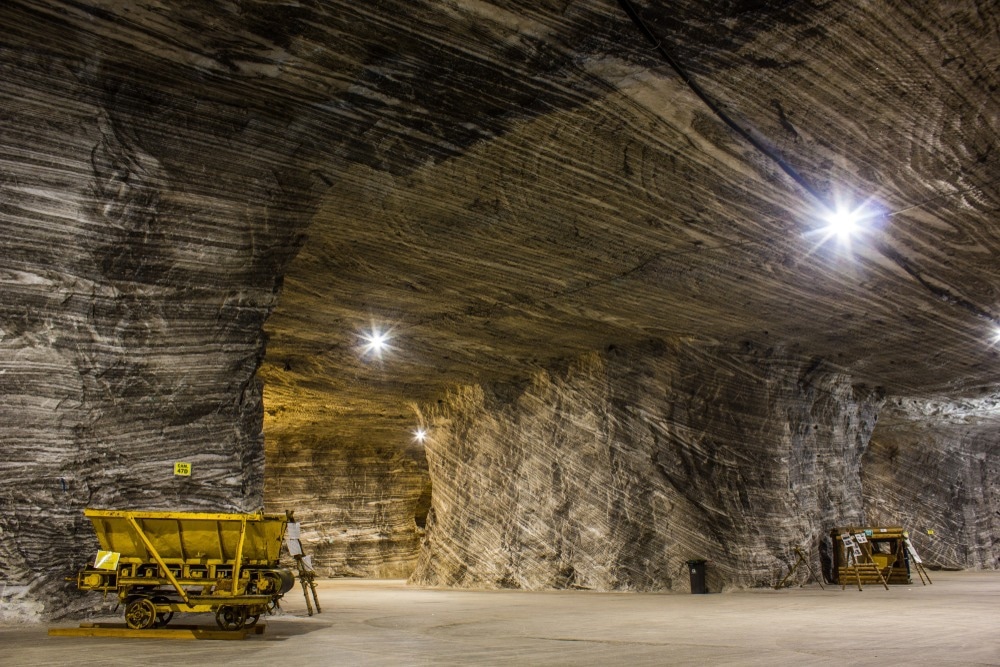In a recent article published in the journal Ore Geology Reviews, researchers from Spain focus on developing a comprehensive methodology for identifying lithologies in an underground mining setting by integrating chemical analysis of drilling chips with measurement-while-drilling (MWD) data.

Image Credit: Maria Passer/Shutterstock.com
This integration is crucial for assessing the chemical composition of borehole zones with high resolution, a challenge addressed in the illuMINEation project. The research aims to validate an offline automated drilling system in combination with MWD data, utilizing machine learning techniques to create a site-specific prediction model for defining ore/waste boundaries.
Background
Drilling plays a pivotal role in the mining industry by providing essential insights into the characteristics of rock masses, including ore grade and boundary definitions. Core drilling operations involve extracting specimens for geo-mechanical and chemical characterization, which is crucial for resource estimation and mine planning. Traditional drilling exploration campaigns are conducted to guide mining method selection and continuously update geological models during mine operations.
In underground mining, the challenges associated with sampling and analyzing drilling chips are amplified due to limited space, harsh working conditions, and the need for adaptability to various drill rig configurations. Innovative systems, such as the "Autosampler," have been developed to address these challenges by collecting secondary samples for off-line X-Ray fluorescence (XRF) analysis. Moreover, using water as a flush fluid in underground drilling leads to wet or semi-wet chips, necessitating adjustments in analysis techniques like XRF and laser-induced breakdown spectroscopy (LIBS).
The Current Study
The methodology employed in this study involved the monitoring of drilling data in a complex fluorite deposit using a retrofitted drill rig equipped with a semi-automated control system. Over 840 chemical samples and 23,000 MWD records, accompanied by geological and geotechnical data, constituted the database for analysis. Two key approaches were utilized: a k-means clustering heuristic algorithm and a machine learning (ML) ensemble model.
The k-means clustering algorithm was applied to define rock classes based on their physicochemical features. This algorithm helped categorize the rock classes by identifying similarities and differences in the drilling parameters. By segmenting the data into distinct clusters, the algorithm facilitated the classification of ore and waste based on their unique characteristics.
The ML ensemble model was trained using the defined rock classes to distinguish between ore and waste based on drilling parameters. Oversampling and undersampling techniques were implemented to address the unbalanced size of the rock classes. The model's prediction success rate, measured by the F1 score, was approximately 70% for ore with a high silica content and around 86% for waste.
Continuous drilling chip sampling was crucial in reducing operator bias and improving the F1 scores for all classes using various ML techniques. The study also explored the correlations between rock mineralogical characteristics and their mechanical response during drilling. This analysis highlighted the benefits of using MWD-based information for analysis-while-drilling (AWD) in ore grading processes.
Results and Discussion
The study revealed significant insights into classifying rock classes based on drilling parameters and differentiating between ore and waste in underground mining operations. Machine learning techniques, notably the k-means clustering algorithm and the ML ensemble model, proved effective in achieving accurate classification results.
Unsupervised ML techniques, such as the k-means algorithm, were crucial in labeling rock classes based on the variance of drilling parameters. This approach helped identify critical parameters, such as penetration rate (PR) and feed pressure (FP), that contributed significantly to the classification process. By segmenting the data into distinct clusters, the algorithm provided a structured framework for analyzing the relationships between drilling parameters and rock types.
The hybrid ML model constructed using resampling methods, ensemble decision trees classifiers, and hyperparameter-tuning techniques demonstrated the ability to handle imbalanced classes and complex relationships between drilling parameters and rock types. The model achieved high F1 scores, exceeding 70% for ore with high silica content and around 86% for waste, indicating its effectiveness in accurately distinguishing between ore and waste based on drilling data.
Continuous sampling data played a critical role in improving the ML model's classification performance. The model achieved higher F1 scores for both ore and waste categories by reducing operator bias and enhancing the data's resolution. The study highlighted the importance of considering continuous sampling data and employing advanced ML techniques, such as Gaussian SVM, to enhance the accuracy of ore/waste recognition in underground mining operations.
Conclusion
Integrating chemical analysis of drilling chips with MWD data, supported by machine learning techniques, offers a promising approach for accurately identifying lithologies in underground mining operations. The study's findings underscore the efficacy of ML models in classifying rock classes based on drilling parameters, with implications for improving efficiency and accuracy in ore/waste recognition. The research contributes to filling a gap in underground operational environments by combining state-of-the-art analysis of MWD data with AI techniques.
Source:
Alberto Fernández, et al. (2024). Ore/waste identification in underground mining through geochemical calibration of drilling data using machine learning techniques. Ore Geology Reviews, 168, 106045. https://doi.org/10.1016/j.oregeorev.2024.10604